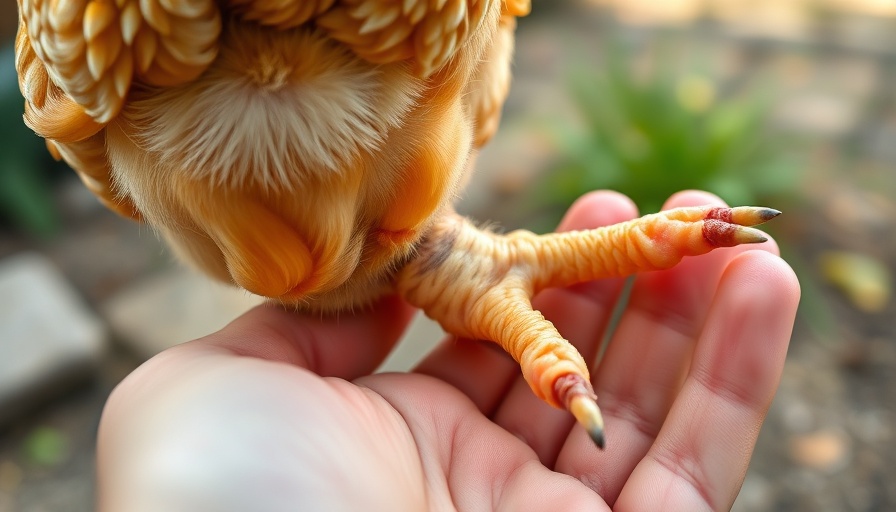
Understanding Swollen Feet in Chickens
Swollen feet in chickens, particularly linked to conditions like bumblefoot, necessitate prompt attention from poultry caregivers. Bumblefoot, or plantar pododermatitis, manifests as swelling in the footpad, often exacerbated by underlying infections such as staphylococcus. It is crucial to recognize that injured chickens are at a higher risk of developing this condition, especially after small cuts or abrasions on the skin contact contaminated surfaces.
Why You Should Act Quickly
Delays in addressing swollen feet can lead to severe complications. Left untreated, bumblefoot can escalate, causing painful abscesses and potentially spreading the infection to other tissues. It’s essential for chicken owners to monitor their flock regularly for signs of foot issues. Monthly health check-ups can catch infections in early stages, diminishing their severity.
Signs and Symptoms to Watch For
Identifying swollen feet entails looking for early symptoms like inflammation, redness, and abnormal heat in the footpad. A notable indicator is a shiny, reddened area or a black callus on the footpad. If any chicken shows reluctance to walk or limping, immediate veterinary treatment should be sought. Educating yourself about mild to severe symptoms empowers you to act decisively before minor issues develop into serious health concerns.
Best Practices for Prevention
Preventing swollen feet requires an understanding of your chickens' environment and habits. Ensure that their living conditions are safe by providing adequate perch heights, soft bedding, and clean grounds. Regular checks for rough surfaces or splinters can significantly reduce the risk of cuts. Additionally, a balanced diet, rich in vitamins like Vitamin A, is vital for maintaining healthy skin and preventing infections.
Conclusion: Healthy Feet, Happy Chickens
Taking proactive steps to ensure the well-being of your flock is crucial, as the health of their feet directly impacts their overall quality of life. Awareness and early intervention are key to preventing swollen feet and subsequent infections like bumblefoot. By prioritizing regular health checks and environmental safety, chicken keepers can promote healthy, happy birds.
 Add Row
Add Row  Add
Add 




Write A Comment